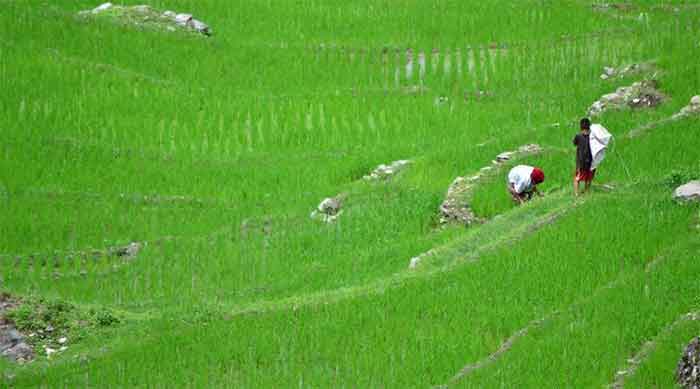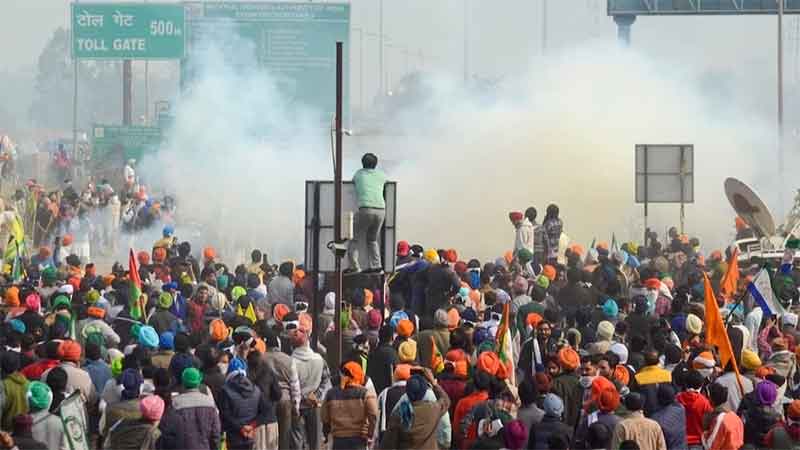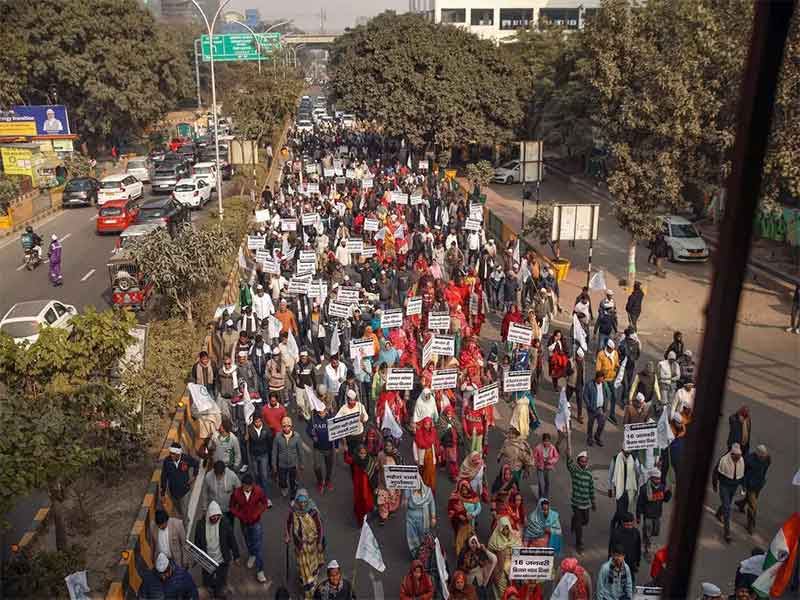
The ongoing farmers’ movement has led to the coming together of many farmers’ organizations and this unity has been sustained despite several efforts to divide them. As many farmer representatives have stated repeatedly, the mobilization of farmers on Delhi borders would have seen even greater participation from various parts of the country but for the fact that travel conditions in Covid times are much more difficult than in normal times. Local protests in various states have been reported regularly.
Secondly, a no less important aspect is that of late even organizations of landless ( or near landless) rural workers have started extending support to the farmers’ movement and even participating in it. In addition organizations which have a base among farmers as well as farm workers and seek to represent both have been active participants and mobilisers earlier. Hence a rare opportunity exists of farmers getting more sympathetic and helpful towards farm workers, while farm workers also have a chance to get a better idea of the constraints and problems faced by farmers.
In addition this movement is also getting some support from small and medium traders involved with farm produce in at least some parts of the country. Women farmers are also joining in good numbers and with growing determination. People of various faiths and religions are showing growing unity and fraternity at the protest sites, a very welcome sight.
People from so many sections– rural and urban, devout and atheists, rich and poor, elite and rustic– are coming forward to offer their support and contributions in heartwarming ways. As a result despite so many problems and difficulties, even tragedies, the overall mood of the protest action is very upbeat, at times even festive. Above all, let us not forget that in the last week of November this protest really started as a joint action of workers and farmers, with a huge national one-day strike by workers accompanying the march towards Delhi by farmers.
Another very welcome feature is that people are increasingly in a mood to call the bluff of government propaganda, despite this being parroted repeatedly by major sections of media. This is evident from the robust criticism offered by villagers of the real designs and manipulations of the government and crony-capitalists, overcoming the massive build-up of the government propaganda in favor of the three controversial farm laws and related policies and actions of the government.
These are exceptionally favorable conditions for taking ahead the much-needed agenda of rural change based on justice, equality and ecologically protective, sustainable farming technology. The need for this change has been felt for a very long time but such has been the dominance of views pushed by government and agribusiness interests that the agenda based on justice and environment protection has been steadily marginalized. To give just one example, land distribution among the rural landless has been almost completely neglected in recent times.
There are very compelling reasons for big improvements and changes in rural areas. As things stand today, farmers are being pushed into the category of landless farm workers at the rate of 100 every hour. This estimate is based on the census figures of 8.6 million farmers having been pushed into the ranks of landless rural workers during one decade 2001-2011 ( the latest census figures available to date). This data moreover is supported by a lot of other evidence on increasing costs, debts and related tensions of small and medium farmers in India, apart from the increasing problems faced by weather extremes and uncertainty in times of climate change. In many group discussion in various parts of the country, I have heard countless tales of the increasing indebtedness and distress of small and medium farmers. On the other hand, the extreme poverty of landless sections is often even worse, many of them no longer able to survive except on the basis of difficult and uncertain long journeys as migrant workers.
At the same time the ecological crisis relating to farming systems has worsened rapidly in most parts of the country. As has been the experience of many countries, when use of chemical fertilizers, pesticides and herbicides is increased rapidly for some years, there is rapid decline of organic content of soil and alongside natural fertility of land is affected very adversely. Desperate farmers resort to even more costly changes and inputs, but without the anticipated results so that costs and debts increase rapidly. Water pollution also increases, along with depletion of water sources for more water-intensive farming. Farmer-friendly organisms, insects, and birds, including most important pollinators, are gravely harmed by poisons and perish in billions.
With increasing costs and debts, and inexperienced in changing the wider environmental and technological constraints on their own , farmers tend to become more dependent on government protected procurement but the government has only limited provision for such fair price or minimum support price based procurement.
Hence conditions are ripe for changes which can bring short-term relief as well as longer-term more satisfactory and sustainable livelihoods to farmers, while at the same time providing more healthy and nourishing food to people. Starting with repealing the three controversial farm laws which will only aggravate the existing distortions of food and farming system, the main planks of this change should be—
- Higher allocations for farmers and farming in government budgets, together with using these funds for directly benefiting small and medium farmers , particularly for eco-protective farming,
- Moving towards social agro-ecology with its focus on small farmers and eco-friendly, low cost and self-reliant farming; moving from commercial inputs towards better utilization of local resources; away from monocultures towards carefully selected
mixed farming systems, moving away from endangering basic soil and water resources towards according very high priority to all aspects of soil and water protection and conservation,
- Bringing back land reforms on rural agenda, starting with making available at least small plots of land to landless rural households,
- Diversifying rural livlihoods in various ways, with special emphasis on food processing and value added to products of agriculture, horticulture, animal husbandry etc.
Bharat Dogra is a journalist and author. His latest books include Planet in Peril and Man Over Machine.
IF YOU LIKED THE ARTICLE SUPPORT PEOPLE’S JOURNALISM















































